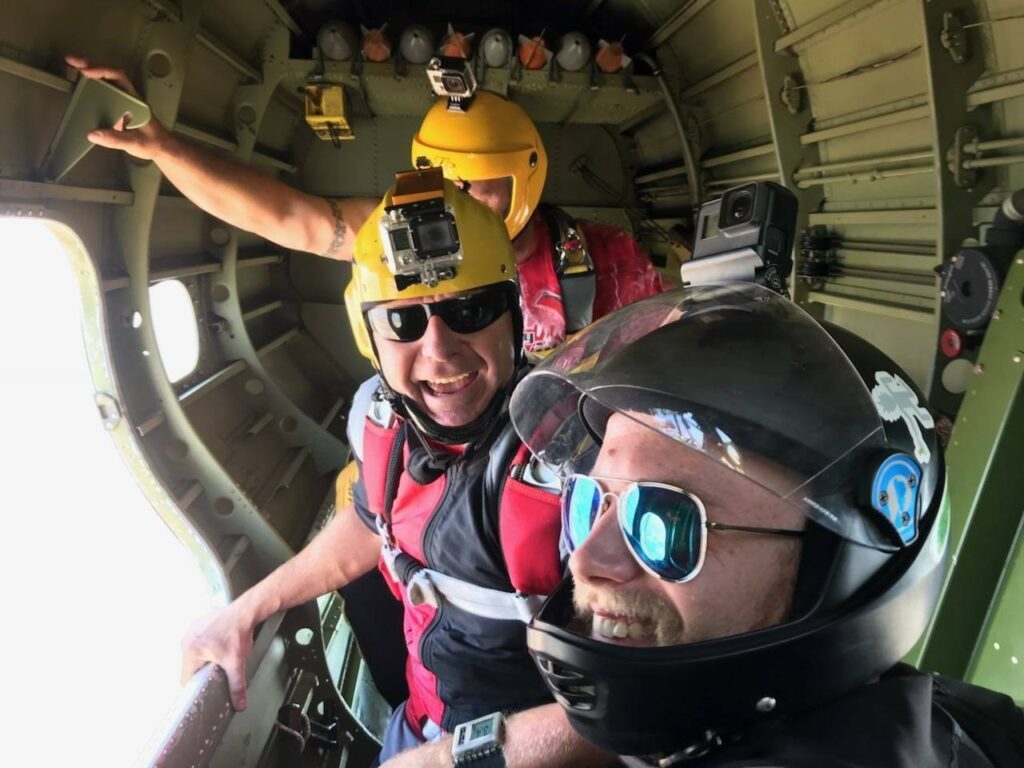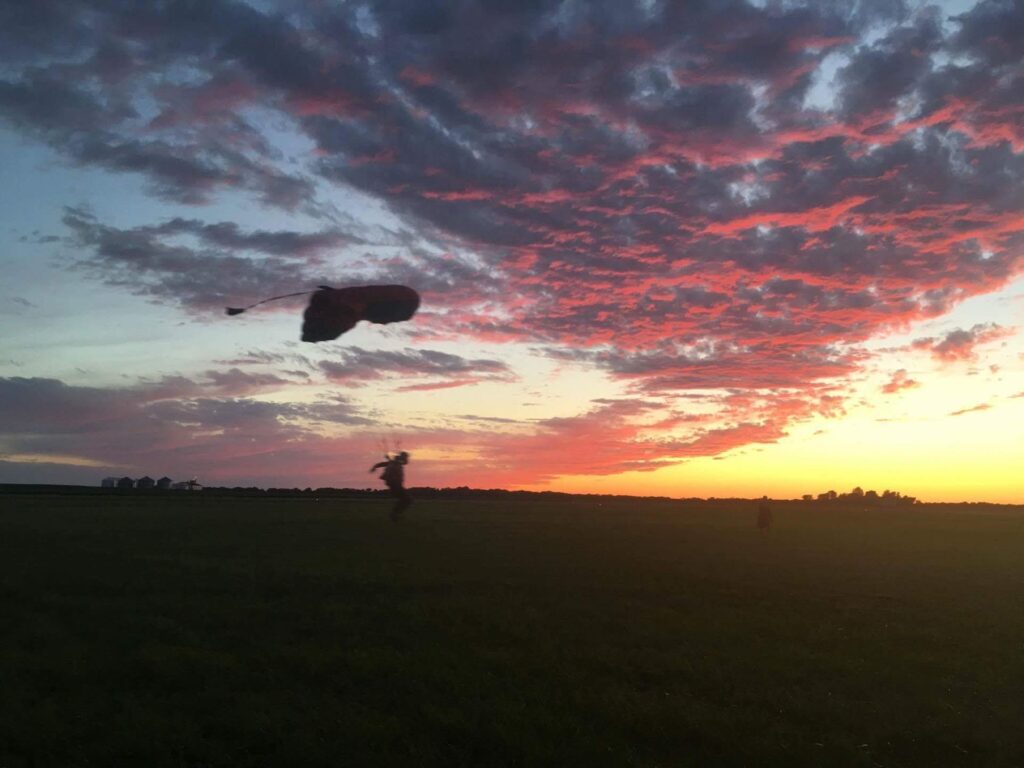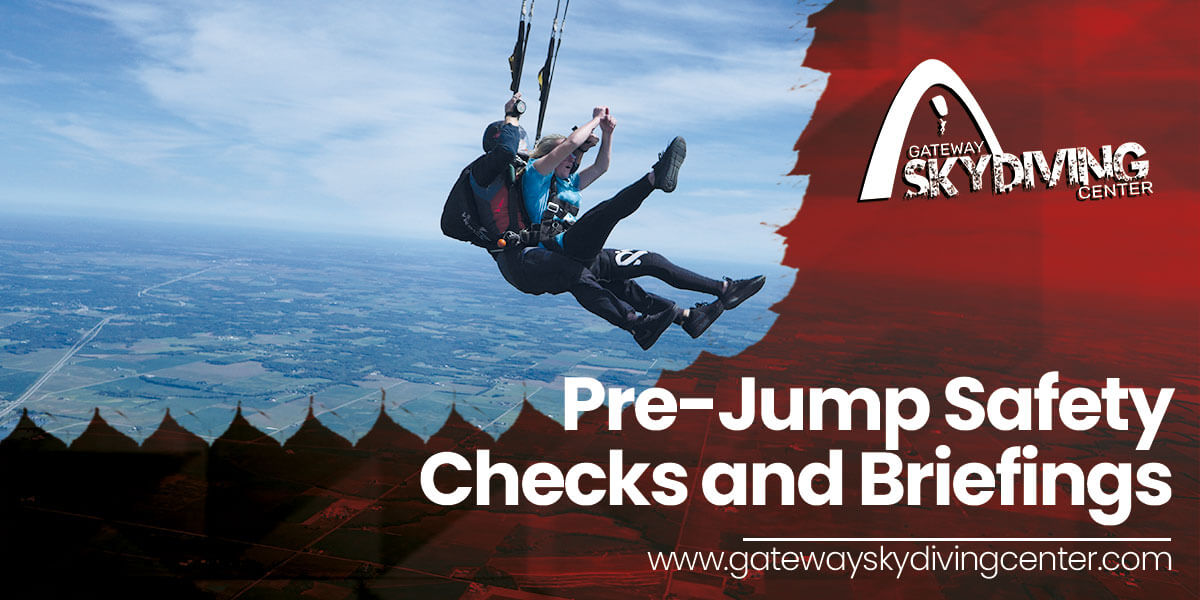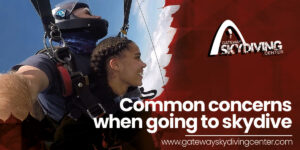Safety is a big question when going to skydive. What are the common procedures for safety checks learn in the text below. Gateway Skydiving Center mission is to create a fun and friendly environment for our first time and experienced jumpers alike while putting safety first.
Equipment preparation is essential
Preparing all skydiving equipment and procedures prior to each jump is critical to preventing accidents.
Ground crew briefing:
A load organizer (a senior jumper or instructional rating holder) should coordinate to ensure that everyone is in agreement:
a. communications procedures to meet BSR requirements for ground-to-air communication: smoke, panels, radio, etc.
b. jump order
c. distance between groups on exit
d. landing pattern priorities
e. control of spectators and vehicles
f. student operations (USPA Instructor)
(1) wind limitations
(2) setting up and maintaining a clear target area
(3) critiques of student landings
(4) maintenance of master log
(5) accident and first-aid procedures
Pilot briefing
The load organizer coordinates with the pilot.
a. jump run altitudes
b. jump run direction
c. communications (ground to air, jumpmaster to pilot, air traffic control)
d. aircraft attitudes during corrections on jump run
e. jump run speed and cut
f. locking wheel brake (if applicable), but the parking brake is not to be used
g. gross weight and center of gravity requirements and limitations
h. procedures for aircraft emergencies
i. procedures for equipment emergencies in the aircraft

Skydiver briefing
Conducted by the load organizer:
(1) seat belt off altitude: 1,500 feet above ground level (AGL) or designated by drop zone policy
(2) movement in the aircraft, especially during jump run
(3) aircraft emergency procedures, including communication procedures
(4) parachute equipment emergency procedures
To be conducted by the USPA Instructor:
(1) review of student log or record
(2) jump plan
- (i) exit and freefall, including jump commands
- (ii) emergency procedure training or review
- (iii) canopy control and landing pattern
- (iv) drop zone appearance and hazards (an aerial photo or map is recommended)
(3) protection of operation handles and pins
(4) conduct in aircraft: mental preparation and movement
Equipment checklist
- Equipment check responsibilities before boarding and before exiting:
- The USPA Instructor or Coach checks the student’s equipment.
- Each individual skydiver ensures that his or her own equipment is inspected three times prior to each jump.
- before putting it on
- prior to boarding
- prior to exit

- Checklist
- helmet: proper fit and the chin strap threaded correctly
- goggles or glasses secure and clean
- canopy releases: properly assembled and periodic maintenance performed
- reserve static line (RSL) hooked up and routed correctly (refer to manufacturer’s instructions)
- altimeters checked and set and ensure that visual altimeters do not block operation handles
- main parachute
- main canopy properly sized
- container properly closed, pull-up cord removed, and closing loop in good condition
- activation device
- practice main deployment handle secure (student)
- harness:
- straps not twisted and routed correctly
- chest strap
- leg straps
- belly band, if applicable
- snaps secured and closed and/or friction
- adapters properly threaded
- adjusted for proper fit
- running ends turned back and sewn
- loose ends tucked into keepers
- straps not twisted and routed correctly
- belly band (if used):
- correctly routed
- adjusted
- friction adapter properly threaded




